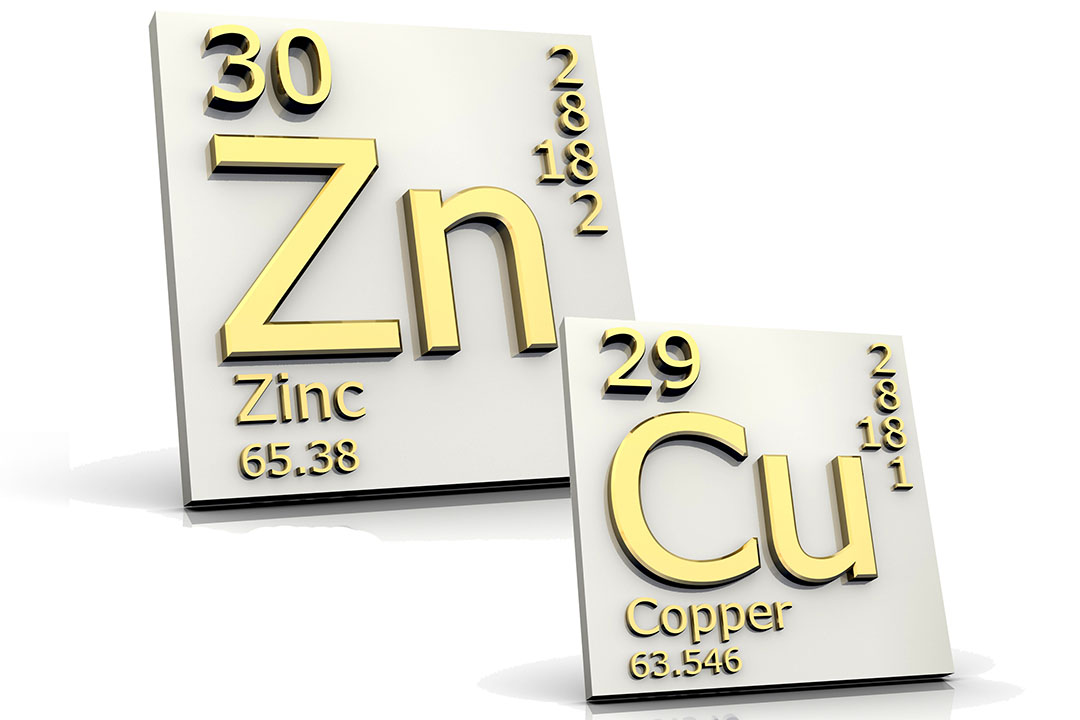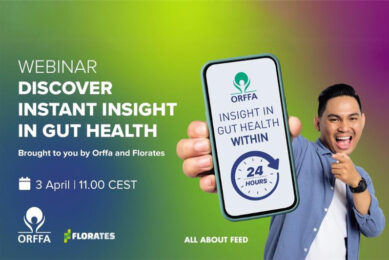Zinc and copper oxides: The best combination

It is difficult to find molecules which are more popular than zinc and copper in pig production. Zinc oxide, named ‘vitamin Z’ by veterinarians, has strongly established anti-diarrhoea effects after weaning. A potentiated form of zinc oxide and a new source of copper are now available for the optimal supply of these nutrients which are essential for the animal and for the gut.
It has been decades since the pharmacological dosage of zinc oxide, 20 times more than physiological requirements, has been routinely added to piglet feeds after weaning. Field experience proved the beneficial effects on diarrhoea, and scientific meta-analysis confirmed improvement of feed intake and animal growth. However, the downsides are known too: excess usage due to too high supplementation duration or level, nutritional interactions, risks of contaminants, risk of accumulation in the environment, risk of increased microbial resistance. In some areas like the European Union, such practices have been regulated through veterinary prescription of medicated feeds. Permanent usage of high dosed ZnO in piglet feeds is more and more restricted. This is why feed manufacturers have looked for more sustainable practices, either with other zinc sources, or with improved forms of zinc oxide. Different zinc compounds, like sulphate and chelated sources, have been tested in the 2000’s, without convincing results. Coated forms of zinc oxide failed to achieve the same results as high dosed ZnO. As encapsulation only releases ZnO in the small intestine, it can not act as early as in the stomach (Figure 1).
Figure 1 – Effect of ZnO on bacterial populations in the stomach and ileum of weaned piglets.

Only zinc oxide works, but there is a wide heterogeneity of feed grade zinc oxides used by pig producers or feed manufacturers. Feed safety and animal health may be degraded by contaminants (heavy metals, dioxins, etc). Some products may have a very high concentration in iron, thus leading to possible counteraction on E. coli populations. Differences in physio-chemical features will affect dissolution kinetics of ZnO in the gastrointestinal tract, which will impact the beneficial effect on intestinal health and the bioavailability at absorption sites. From more than 40 samples of feed grade ZnO collected worldwide, a potentiated form of zinc oxide (HiZox) showed significant differences with other products (Figure 2). This explains how the product, when supplied at low dosages, can improve intestinal health through reduction of pathogenic bacteria and improvement of gut integrity, as recently shown by Ghent University in Belgium (J. Anim. Physiol. Anim. Nutr., 2018 ;1-11).
Figure 2 – Principal component analysis of zinc oxide sources.

Copper oxide: Same properties as zinc oxide
Copper compounds face the same challenge as zinc when feeding livestock and poultry: their biosolubility is required in typical conditions of the digestive tract of animals. Even if the gastric pH of the weaned piglet is not so acidic due to the immature digestive system and buffer capacity of the feed. When solubility is too high, copper ions are liberated too fast, thus binding to antagonistic factors in the upper part of the gastrointestinal tract. On the other hand, some copper compounds will be insufficiently dissociated, as is the case with copper(II) oxide. This black coloured copper oxide is not utilised in animal nutrition because of very poor bioavailability. Copper(I) oxide is another chemical form: it is the monovalent state of copper oxide, recently authorised in the European Union. CoRouge is a highly concentrated (75% Cu) source of copper(I) oxide, in a non hygroscopic, free-flowing and dust-free powder form. With high antibacterial activity due to the monovalent state of copper, the product improves the gut health of monogastric animals. This has been shown in an experiment at Wageningen University, the Netherlands, involving 600 piglets. 2 sources (copper sulphate; CoRouge) at 3 dosages (15 ppm; 80 ppm ; 160 ppm) were tested for 5 weeks after weaning. Effects on animal growth, intestinal microbiota and mineral metabolism were measured. There was a significant improvement of weight gain from increased Cu supplementation levels. The highest difference in BW at 35 days was 3.6kg, comparing 160 ppm from the copper(I) oxide solution to 15 ppm from copper sulphate. The improved growth performance from CoRouge could be explained by modification of intestinal populations profile. Treatments affected Lactobacillaceae and Streptococcaceae which were the most abundant in ileum and colon. There was a source effect when focusing on intestinal E. coli populations (Figure 3).
Figure 3 – Relative abundance of intestinal E.coli.

Toolbox of digestive security
Zinc and copper supplementation in pig feeds are highly popular worldwide because they perform well and are cost effective. Eliminating pharmacological dosages of zinc oxide from piglet diets may be more challenging for diarrhoea control than banning some antibiotics. It will be highly difficult for any dietary intervention or feed additive supplementation to achieve the same level of growth improvement as with copper. As mineral tools in the toolbox of digestive security, zinc oxide and copper(I) oxide can offer the best combination. As dosages decrease due to regulatory constraints, nutritionists look for well identified trace mineral sources which offer the best guarantees of safety, and most robust proofs for optimal performance on intestinal health and bioavailability. HiZox and CoRouge deliver this.
Author: Denise Cardoso and Stéphane Durosoy, Animine











